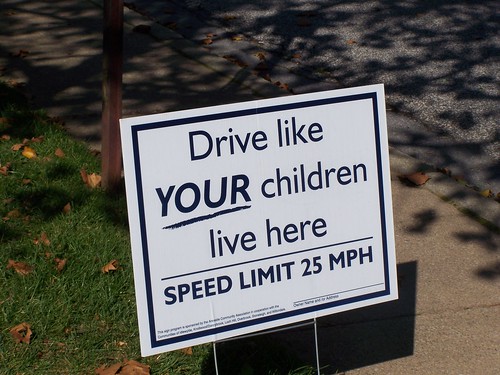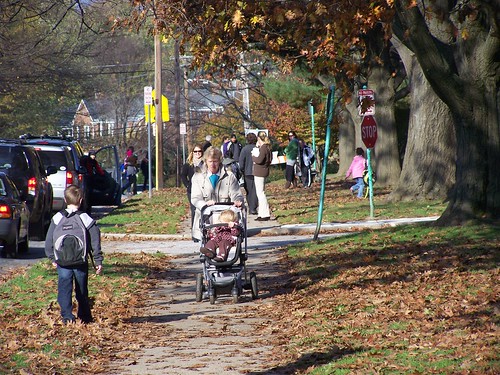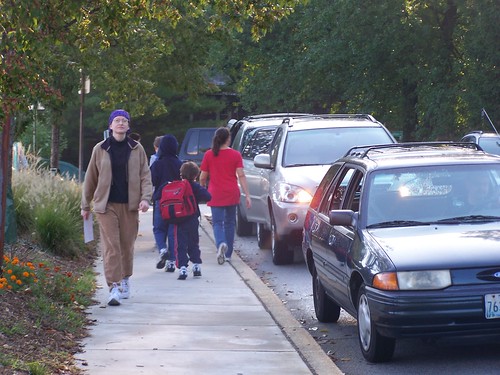International Walk to School Day is tomorrow -- My preferred agenda...
 Walking School bus demonstration by students from the Gladys Noon Spellman Elementary School in Cheverly, Maryland, as part of a program on active at living at the Center for Total Health, Kaiser-Permanente.
Walking School bus demonstration by students from the Gladys Noon Spellman Elementary School in Cheverly, Maryland, as part of a program on active at living at the Center for Total Health, Kaiser-Permanente.The Arlington Commuter Page blog reminds us that tomorrow is International Walk and Bike to School Day.
My problem with the Safe Routes to School movement isn't that it's a bad thing, it's not, and there are many great resources such as the National Center for Safe Routes to School.

And I like the "focus" on ground up initiatives, getting citizens, especially parents, involved.
What bothers me is that there is a lot of wasted energy, because the most important change to make walking and biking to school more possible is mostly ignored.
If school districts were required to do and support balanced transportation, with a focus on promoting sustainable-active transportation wherever possible, parents would have a much easier time dealing with walk (and bike) to school issues.
Instead, the efforts now are mostly ad-hoc and chaotic by comparison to making that kind of systemic change.
The State of Washington does not require balanced transportation planning, but they do require that all elementary schools have safe routes to school maps, and they recommend that school districts have a traffic safety and transportation committee, with a broad-based membership not limited to school district employees.
They publish a great manual on what to do: School Walk and Bike Routes: A Guide for Planning and Improving Walk and Bike to School Options for Students.
 School districts like the one in Boulder, Colorado and Minneapolis have system-wide balanced transportation planning, and safe routes to school plans and programming (Minneapolis Safe Routes to School Plan).
School districts like the one in Boulder, Colorado and Minneapolis have system-wide balanced transportation planning, and safe routes to school plans and programming (Minneapolis Safe Routes to School Plan).In a single generation short trips that we used to walk (or bike) without thought or question have become automobile trips - in fact, two thirds of children living within only one mile or less of their classrooms arrive by motor vehicle. Some studies attribute up to 27% of morning traffic and congestion to school-related trips.
Labels: sustainable transportation, transportation planning, walking






0 Comments:
Post a Comment
<< Home